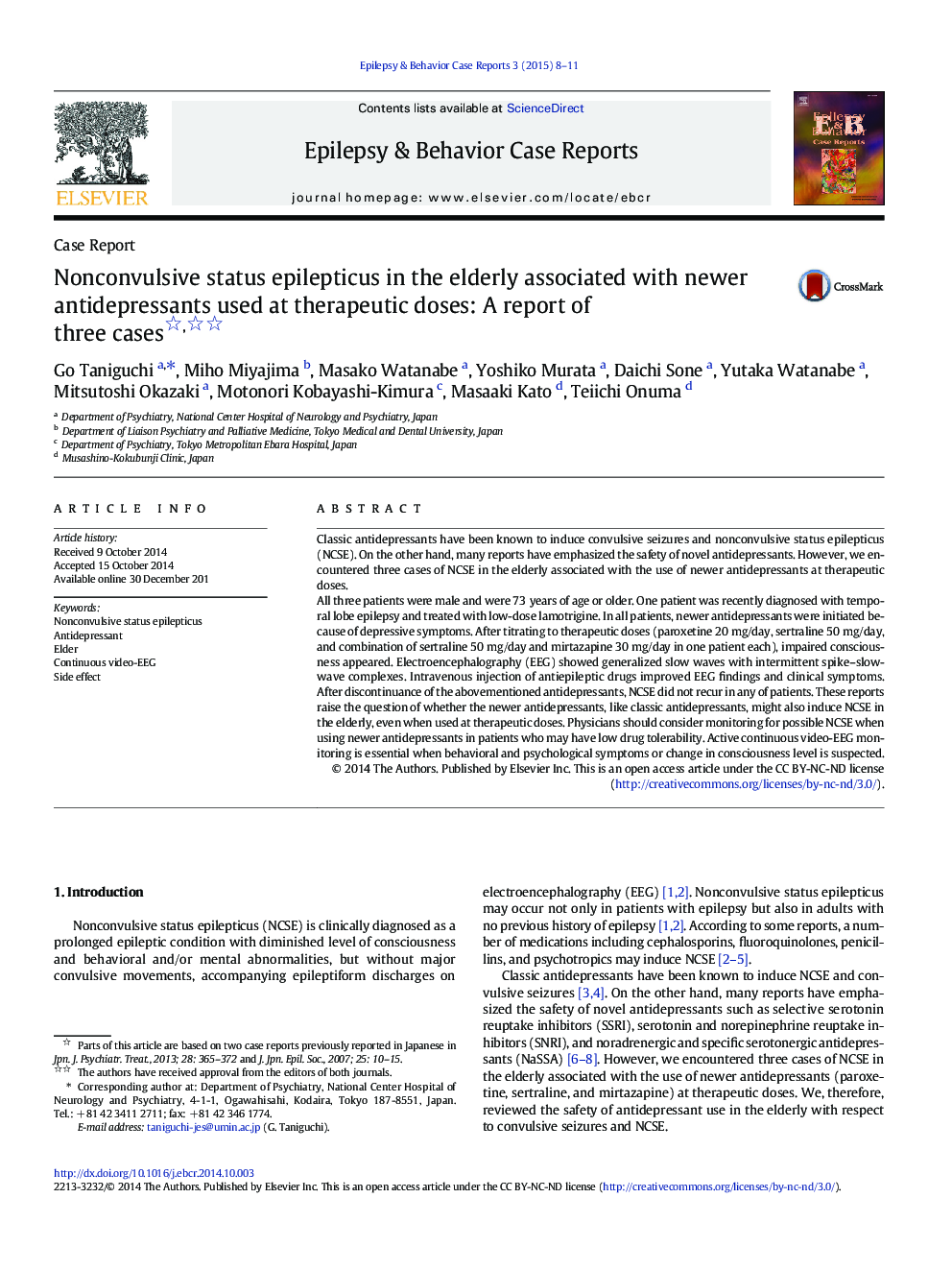| Article ID | Journal | Published Year | Pages | File Type |
|---|---|---|---|---|
| 3051723 | Epilepsy & Behavior Case Reports | 2015 | 4 Pages |
Classic antidepressants have been known to induce convulsive seizures and nonconvulsive status epilepticus (NCSE). On the other hand, many reports have emphasized the safety of novel antidepressants. However, we encountered three cases of NCSE in the elderly associated with the use of newer antidepressants at therapeutic doses.All three patients were male and were 73 years of age or older. One patient was recently diagnosed with temporal lobe epilepsy and treated with low-dose lamotrigine. In all patients, newer antidepressants were initiated because of depressive symptoms. After titrating to therapeutic doses (paroxetine 20 mg/day, sertraline 50 mg/day, and combination of sertraline 50 mg/day and mirtazapine 30 mg/day in one patient each), impaired consciousness appeared. Electroencephalography (EEG) showed generalized slow waves with intermittent spike–slow-wave complexes. Intravenous injection of antiepileptic drugs improved EEG findings and clinical symptoms. After discontinuance of the abovementioned antidepressants, NCSE did not recur in any of patients. These reports raise the question of whether the newer antidepressants, like classic antidepressants, might also induce NCSE in the elderly, even when used at therapeutic doses. Physicians should consider monitoring for possible NCSE when using newer antidepressants in patients who may have low drug tolerability. Active continuous video-EEG monitoring is essential when behavioral and psychological symptoms or change in consciousness level is suspected.
